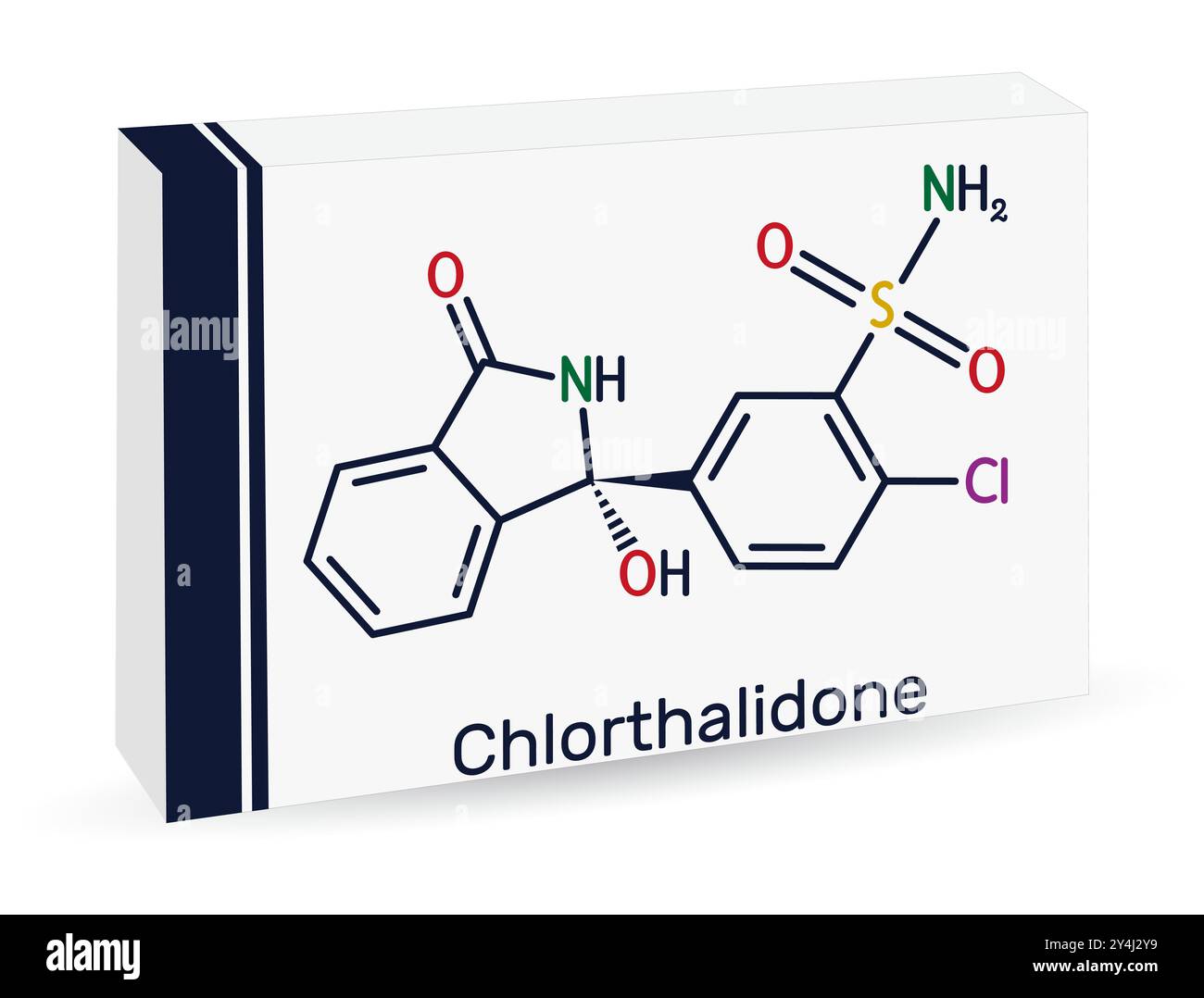Chlorthalidone, a medication belonging to the class of diuretics known as thiazide-like diuretics, is primarily used in the management of hypertension (high blood pressure) and edema (swelling caused by excess fluid). The 25 mg tablet is one of the standard doses prescribed to patients, depending on their specific medical needs and how their body responds to the medication. Understanding how chlorthalidone works, its benefits, potential side effects, and the importance of adherence to the prescribed regimen is crucial for effective treatment.
Mechanism of Action
Chlorthalidone functions by inhibiting the reabsorption of sodium and chloride in the distal convoluted tubule of the kidneys. This action increases the excretion of sodium and water into the urine, reducing blood volume and subsequently lowering blood pressure. It also has a mild effect on increasing the excretion of potassium, but to a lesser extent compared to other diuretics. The reduction in blood volume and peripheral resistance helps in managing hypertension and reduces the strain on the heart.
Benefits
- Hypertension Management: The primary use of chlorthalidone is in the treatment of hypertension. By lowering blood pressure, it reduces the risk of cardiovascular diseases such as heart attack, stroke, and kidney disease.
- Edema Treatment: Chlorthalidone is also effective in treating edema associated with congestive heart failure, hepatic cirrhosis, and a renal disorder like nephrotic syndrome.
- Long Duration of Action: Chlorthalidone has a relatively long duration of action compared to other diuretics, which allows for once-daily dosing. This can improve patient compliance with the treatment regimen.
Potential Side Effects
While chlorthalidone is effective in treating hypertension and edema, it can cause several side effects. Some of the common side effects include:
- Hypokalemia (Low Potassium Levels): This is one of the most significant side effects and can lead to muscle weakness, fatigue, and heart arrhythmias.
- Hyponatremia (Low Sodium Levels): Although less common, it can occur, especially in susceptible individuals, and may lead to confusion, seizures, and coma in severe cases.
- Hyperglycemia (Elevated Blood Sugar): Chlorthalidone can impair glucose tolerance, which is a concern for diabetic patients.
- Hyperuricemia (Elevated Uric Acid): This can increase the risk of gout.
- Electrolyte Imbalance: Besides potassium and sodium, other electrolytes like magnesium and calcium can also be affected.
Important Considerations
- Monitoring: Regular monitoring of electrolyte levels, blood pressure, and kidney function is essential when taking chlorthalidone.
- Diet: Patients are often advised to follow a low-sodium diet to enhance the effect of the medication. However, they should also be cautious not to consume too little sodium, as this can lead to hyponatremia.
- Interactions: Chlorthalidone can interact with other medications, including other diuretics, digitalis, and lithium. Patients should inform their healthcare provider about all the medications they are taking.
Adherence and Lifestyle Modifications
For chlorthalidone to be effective, it is crucial that patients adhere strictly to their prescribed dosage regimen. Additionally, lifestyle modifications can complement the medication’s effects:
- Regular Exercise: Physical activity can help lower blood pressure and improve overall cardiovascular health.
- Balanced Diet: Eating a diet rich in fruits, vegetables, whole grains, and low-fat dairy products can help manage blood pressure.
- Weight Management: Maintaining a healthy weight can reduce blood pressure and the risk of other health issues.
- Limited Alcohol Intake: Excessive alcohol consumption can elevate blood pressure and should be avoided.
Conclusion
Chlorthalidone 25 mg tablets are an effective treatment option for hypertension and edema. While it offers several benefits, including a long duration of action, it is essential for patients to be aware of the potential side effects and take steps to mitigate them. By combining medication with lifestyle modifications and under the guidance of a healthcare provider, individuals can effectively manage their condition and reduce the risk of related complications.
What is the primary use of chlorthalidone?
+Chlorthalidone is primarily used in the management of hypertension (high blood pressure) and edema (swelling caused by excess fluid).
How does chlorthalidone lower blood pressure?
+Chlorthalidone works by inhibiting the reabsorption of sodium and chloride in the kidneys, which increases the excretion of sodium and water into the urine, reducing blood volume and subsequently lowering blood pressure.
What are some common side effects of chlorthalidone?
+Common side effects include hypokalemia (low potassium levels), hyponatremia (low sodium levels), hyperglycemia (elevated blood sugar), hyperuricemia (elevated uric acid), and electrolyte imbalance.
How can lifestyle modifications support the effectiveness of chlorthalidone?
+Lifestyle modifications such as regular exercise, a balanced diet, weight management, and limited alcohol intake can complement the medication’s effects in managing blood pressure and reducing the risk of related complications.



